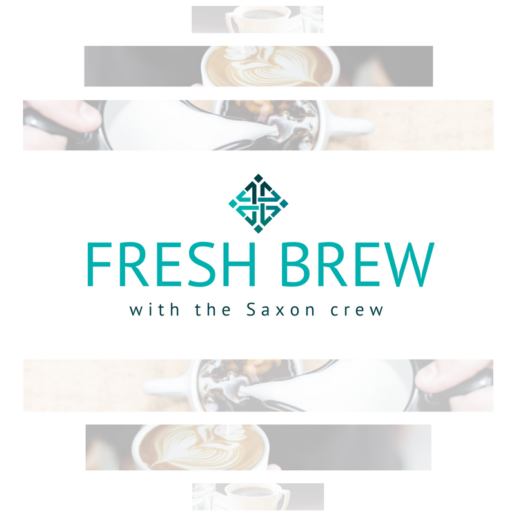Illnesses, Deaths Tied to Vaping
New reports are showing that the use of electronic cigarettes (vaping) is believed to be responsible for five deaths and 450 severe lung injuries. Continue reading this article from SHRM to learn more.
The use of electronic cigarettes, also known as vaping, is believed to be responsible for five deaths and 450 severe lung injuries in what appears to be a nationwide epidemic, according to new reports.
E-cigarettes are battery-operated and produce vapor that simulates smoking. They can resemble regular cigarettes, cigars, pipes, pens, USB sticks and other everyday items. They do not burn tobacco, but the device heats a liquid that usually contains nicotine, flavorings and other chemicals.
While most employers ban smoking in the workplace, their policies don't always extend to e-cigarette products. However, a Centers for Disease Control and Prevention (CDC) health alert on Aug. 30 warned that severe pulmonary disease is associated with using e-cigarette products. The agency, which is part of the U.S. Department of Health and Human Services, launched a multistate investigation into the lung illnesses on Aug. 1.
"Although more investigation is needed to determine the vaping agent or agents responsible," wrote Dr. David C. Christiani of the Harvard School of Medicine, "there is clearly an epidemic that begs for an urgent response." He shared his comments in the Sept. 6 issue of the New England Journal of Medicine, along with the preliminary report "Pulmonary Illness Related to E-Cigarette Use in Illinois and Wisconsin."
The CDC is working with the U.S. Food and Drug Administration, states and other public health partners and clinicians to determine what is sickening users, and in some cases resulting in fatalities. On Friday, it suggested that people refrain from using e-cigarette products during its investigation.
SHRM Online has collected the following articles about this topic from its archives and other trusted sources.
5 Deaths Linked to Vaping. Officials Are Urging Consumers to Stop. (Chicago Tribune)
How Are You Handling Vaping at Work? (SHRM Online)
More States Ban Vaping, E-Cigarette Use in Workplaces (Bloomberg)
Florida Adds Vaping to Regulated Indoor Smoking (SHRM Online)
SOURCE: Gurchiek, K. (6 September 2019) "Illnesses, Deaths Tied to Vaping" (Web Blog Post). Retrieved from https://www.shrm.org/hr-today/news/hr-news/Pages/Illnesses-Deaths-Tied-to-Vaping-.aspx
10 trends that will shape HR in 2019
HR professionals across many industries have common challenges to face this year. Some of the biggest headlines of 2018 involved HR-related topics such as discrimination, harassment, diversity and workplace culture. Read this blog post from HR Dive to learn more.
As HR executives turn the page on a new year some will pause to reflect on just how much — and how little — has changed in the span of 12 months.
Increased attention on topics traditionally considered the realm of HR — discrimination, harassment, diversity, workplace culture — made workplaces the convergence point for some of the biggest storylines in 2018. Calls for equal pay, worker protections and better solutions for harassment and discrimination swirled through the boardrooms and shop floors of Google, Tesla, Amazon and CBS, among others.
In the U.S., political figures debated the historic number of people finding work and the policies driving that trend. Experts warned about the opportunities and consequences of artificial intelligence, robotics and other technologies. HR wasn't just an observer in all these developments — it had a lead role, both when things went wrong and when experts searched for success stories.
And through all that turbulence, some elements of the industry remain unchanged. "We're still the stewards of information and our people," Jewell Parkinson, senior vice president and head of human resources at SAP, told HR Dive in an interview. "That is going to be our role."
HR executives and teams across many industries have common challenges to face in 2019. Below, we've recapped what real HR practitioners and industry observers seeing on the horizon.
-
The talent acquisition panic
For Ceridian's Chief People and Culture Officer Lisa Sterling, this year's challenging recruiting scene will haunt her into the new year. "The thing … that literally keeps me up at night continues to be the focus on attracting world-class talent to our organization," she told HR Dive in an interview. Sterling isn't the only one vexed by the talent acquisition panic.
"I've been in the industry 22 years, and I've had the most interesting year in 2018," said Scott Waletzke, head of enterprise recruitment strategy at Adecco Staffing, USA. "The utilization of technology is going to make it that much better."
Applications and resumes flooded recruiters' inboxes at alarming rates last year and technology has emerged as a much-needed solution to the deluge. "Tech is allowing our recruiters to have more valuable conversations with those candidates," Waletzke said. With these tools, hiring managers can place candidates in the positions where they are the best fit, according to Waletzke.
Of course, with hordes of candidates and low unemployment comes heavy turnover. And, as Sterling said, organizations need to find and lock down not just any workers, but the best talent for their business. This means companies need to provide a top-notch employee experience, starting with the application process.
"People are sharing on social media what those experiences are like, and in a tight labor market, retention is top of mind," said Jodi Chavez, group president, Randstad Professionals, Randstad Life Sciences, Tatum. Organizations can improve retention rates by amping up company cultures, offering training and creating a robust HR department to manage such initiatives, Chavez said.
-
AI as a partner, not a threat
As Waletzke monitored conversations about tech throughout the last two years, he observed a radical shift. "The overall temperature of conversations completely changed. 2017 was robots are going to steal our jobs … now there is starting to be this embrace of technology," he said.
For HR, technology has transformed recruitment, in particular. "We're really looking at ways we can use AI or machine learning to automate the talent acquisition experience so we can dive deeply into the one-on-one relationships," Sterling said. Job search platform CareerBuilder has used machine learning to add a touch of personalization, CEO Irina Novoselsky said in an interview. Those searching on CareerBuilder for jobs at Disney might see the word "client" replaced with the term "guest," a standard swap of lingo for the entertainment company.
"It really is early in that curve of HR users having to become technologists," Novoselsky said. "That really shifts the conversation they're having and what they're looking for."
While these developments may speed up what can be slow, painstaking work, Triplebyte Co-founder and CEO Harj Taggar pointed out that the tech may make the process more efficient, but it does not address everything. "It doesn't help with bias — and in fact, it exacerbates [it]," he told HR Dive in an interview.
That's perhaps why some practitioners endorse a more steady, careful approach to new technologies. "It takes time to figure it out, so I think as recruiters and HR professionals we have to really embrace this change, go with it, try things, fail at times, figure it out, but be comfortable with it," Larry Nash, director of recruiting at EY, told HR Dive.
-
Data insights continue to evolve
HR is by now familiar with the calls for data-driven insights — but those insights have to keep people at their core and can't just focus on financial or other success measures.
"It's not good enough to just reduce cost anymore," Art Mazor, human capital practice digital leader and the global leader for HR strategy and employee experience at Deloitte, told HR Dive in an interview. "That's old-school thinking."
Employers have learned the hard way that while working toward a metric may feel modern and effective, the results can be anything but if the focus is solely on improving the number and not on making real, substantive improvements or addressing the underlying issues.
More employers have opted to use data in an effort to better track their workforces, Sam Stern, principal at Forrester, told HR Dive in an interview. "But the problem is, usually the shortest path to success on that metric is to game the system. And to me, to be surprised by that is to be delusional. That's human nature."
Data has its limits, too. An employer can only slice and dice the numbers so many ways, and insights alone don't lead to a lot of change, Jim Barnett, CEO at Glint, told HR Dive in an interview. It's about what HR leaders do with those insights; change happens at the manager and individual team levels. For example, employers can monitor the employee lifecycle from onboarding to exit to get a clear view of why people leave — but without a deeper understanding of who is leaving and why, HR could miss key insights.
"Fundamentally, it comes back to understanding how your team is doing," Barnett said. "These fundamental things haven't changed over the decades."
The pendulum will likely swing back toward qualitative analysis partly to avoid the "paralysis by analysis" that some companies are experiencing, Chavez said.
"You could have all the data in the world and still have high turnover," she added. "There's still a human element. Do exit interviews. You won't see that on a data point."
-
More pressure to become 'agile'
Organizations are increasingly being asked to shape internal operations in a way that mirrors external business trends. To that end, executives have taken to terms like "agile," with more than 80% of C-level executives in one survey calling agility the most important characteristic of a successful organization. But what exactly does that mean?
The term can lend itself to many definitions, but Cecile Alper-Leroux, vice president of HCM innovation for HR technology company Ultimate Software, said in an interview with HR Dive that in an HR context it's closely related to another idea that became popular in the HR world last year: flexibility. Agile organizations embrace contingent work forms, like contracting, to cover particular gaps that employee models may not be able to address. Ultimate Software has experimented with "flex teams," for example, that address business problems as they come up rather than focusing on one specific task.
There's an element of the gig economy in these arrangements; "People want to control their own destiny," Alper-Leroux said, explaining that an agile organization allows workers to do that to some extent, which means it also points to a new way to measure worker satisfaction. "We have to embrace a new set of metrics other than traditional results."
But teams don't always form organically. "There's a push to ensure the work can get done with the fewest barriers and how best to onboard people alongside their new counterparts in the workplace," Mazor said. Those "counterparts" won't always be people, either. "What can we do to influence positively that drive to productivity of the enterprise?"
-
The role of culture in employer brand
Consumers are value-driven — meaning employees are now, too, Stern said. Employees and applicants are aware not only of an employer's advertising campaigns and brand communications, but the charitable giving an employer does, the messages it sends and the way it treats its partners and contractors. That info is simply more available now, Stern added, and people want to align with companies that share their values.
Societal shifts have partly enabled the rise of the employer as an "institution of trust," as well, Stern said. Some institutions have betrayed that trust in high-profile incidents, meaning employees are looking to companies to be less passive and to "show up" to certain moral events.
"The contract used to be an employer gives a job for life and a pension, so employees give their heart and soul and expect nothing else. And employers broke that contract," he said. "And employees have wised up. 'I need you to support my lifestyle because who knows how long we will have this relationship.'"
-
A new focus on where the work is being done
As employers turn their focus to employee experience, more are considering exactly how and where employees do the work that needs doing, Mazor said. Do workers gather on a campus or at multiple, scattered locations? Do people use virtual tools, like video, to connect and collaborate? HR pros must keep these questions in mind as they design culture.
"It's no longer about redesigning process. It's really around reimagining the work," Mazor said. "How do we blend this mix of workers from so many different sources and blend those with the varieties of tech that are available to us in the HR space and more broadly?"
But that means HR may be held accountable for more aspects of the employee experience than it may have been in the past, including a functional tech experience — something more traditionally the purview of IT.
"Is it needed for the day to day and is it current? Is it glitchy? Does it shut down every three days?" Chavez said of employee tech. "Those are things people are leaving their organizations for." In other words, HR would be remiss to overlook the day-to-day tasks of the frontline employee.
And more employers are keeping an eye on the challenges facing their frontliners, from the work environment, to the tools used and beyond. HR managers will put themselves in workers' shoes in 2019 to ensure no part of the experience is overlooked. Because for all the fancy tech a company can employ — "if it doesn't work right, it won't matter," Chavez said.
-
Potential for wage growth, but recession fears loom
The wage conversation will continue into 2019, Waletzke said. While employers may remain conservative concerning wage increases, some industries may “flex their wages up” because they are heavily competing for talent; either way it will be a topic of discussion in 2019.
"I think ultimately the focus then will shift to creating potentially other ways to attract talent, be it through different benefit packages or vacation time — alternative benefits to help attract people to the workforce," Waletzke added.
But as more outlets begin to speculate about a potential coming recession, that instinct to keep wages steady in the face of upheaval may feel justified, especially as automation and tech adoption enable some industries to phase out certain jobs entirely. Recession remains speculation, especially for 2019. The real question for employers is how they will approach the talent market in a potential economic downturn.
Some organizations will double-down on ensuring their employees will be more resilient and productive, Stern said, but "I think that will be a minority." A large cohort may instead go after automation and incorporate AI to streamline the work — and reduce the need to hire at all.
"It's less about people losing their jobs to robots and more people never getting jobs because robots already have them," he said.
-
Leveling the playing field for women and minorities
Certainly, the push for gender equality was a dominating theme within the overall employment conversation of 2018. As that dialogue continues in 2019, that theme will likely extend, but may take on different forms. "I think you're going to see more on that," Sterling said. "Not so much on the #MeToo piece, but in neutralizing, leveling the playing field."
With this may come the continued examination of the C-suite. In 2018, the number of female Fortune 500 CEOs plummeted by 25%, according to Fortune. Addressing this disparity may cue the change Sterling predicted. Many experts have recommended that organizations with systemic gender bias or ongoing incidences of sexual harassment trigger a cultural revamp starting at the top. The theory goes like this: If the board of a company features a diverse set of executives who are compensated fairly, teams are more likely to imitate the example.
Even as the #MeToo movement fades, the impetus it gave to issues surrounding sexual harassment and gender parity will likely continue to spark discussions and change. One report found that closing the worldwide gender gap will take 108 years, but initiatives like equal pay laws, better parental leave policies and stricter sexual harassment laws may zip up that gap more speedily.
-
Empowering managers to help employees
In 2019, HR execs can't afford to overlook one of their biggest tools in building an engaging culture: front-line managers. Employers will be looking for ways to put insights in managers' hands so they can lead to their teams to greatness. This shift in perspective is one reason why performance reviews have moved away from annual affairs and toward consistent, forward-looking talks, Barnett said.
"Now companies have really realized, it isn't about surveys or getting the number up. What this is really about is empowering managers to have thoughtful conversations with their teams," he added.
To ensure success, managers must be trained to have the right conversations. It's easy to tell employees they are doing well; it's considerably harder to get a problematic employee to change their ways, Barnett said. HR has an opportunity to educate and create real transformation in an organization through management personnel.
In turn, businesses are "really shifting [their] approach to workforce experience and how HR runs to drive those business outcomes. Not to support. To drive."
-
Development and training to fill important gaps
Skills gaps have spurred employers, non-profits, universities and even local governments to enter the business of upskilling talent. Such efforts are essential to keeping demand in check and may even involve bringing those who once left certain areas of the job market back into the fold.
"What we are also seeing, too, is this idea of what we would call 'encore careers' — people who exited and want back in," Waletzke said, "those individuals will also need to be reskilled, and I think that is a huge topic that we need to stay at the forefront of. Those jobs can't be left vacant."
The focus on employee development has also changed the way managers talk to workers, Taggar said. Those in charge are pressured to provide increasingly continuous and structured feedback. "I think in general everyone wants that, but people aren't happy getting a standard review anymore. People want access to coaching… and all these things to develop their skills more than ever."
But skills deficits also mean recruiters can't rely on the same criteria to fill out their payrolls in 2019. That's a lesson Nash believes has been crucial to staying competitive."In addition to having some of these hard, technical backgrounds, it's really important [candidates] have certain mindsets that will enable to them to grow and change," Nash said. "Just having a growth mindset that things aren't static — they constantly change, and you have to embrace that change."
SOURCE: Moody, K. Golden, R. Clarey, K. (27 August 2019) "10 trends that will shape HR in 2019" (Web Blog Post). Retrieved from https://www.hrdive.com/news/10-trends-that-will-shape-hr-in-2019/545343/
4 Tips for Managing Organizational Change
Only 26 percent of transformation initiatives succeed, according to a McKinsey study. One thing most successful transformation efforts have in common is that change is driven through empowerment, not mandated from the top. Continue reading this blog post from Harvard Business Review for four tips on managing organizational change.
Launching major transformation efforts is a common way that business leaders try to get a leg up on the competition, or just keep their heads above water. But too many of these efforts fail. Change is difficult, and many people not only resist it but seek to undermine it. Unsurprisingly, then, a McKinsey study found that merely 26% of transformation initiatives succeed. Most successful transformations have one thing in common: Change is driven through empowerment, not mandated from the top.
In my research of transformative political revolutions, social movements, and organizational change, successful efforts not only identify resistance from the start but also make plans to overcome those who oppose the transformation. And it’s done not with bribes, coercion, shaming, or cajoling, but by enabling others within their organizations to drive change themselves. Here’s how they do it.
Start with a small group. Typically, leaders launch transformation efforts with a large kickoff. It makes sense: They want to build momentum early by communicating objectives clearly. This can be effective if a ready consensus already exists around the initiative. Yet if the desired change is truly transformational, it is likely to encounter fierce opposition; inertia can be a powerful force, even more powerful than hope or fear. So by starting with a large communication campaign, essentially presenting the initiative as a fait accompli, you are very likely to harden the opposition of those who are skeptical of the change.
Most successful transformations begin with small groups that are loosely connected but united by a shared purpose. They’re made of people who are already enthusiastic about the initiative but are willing to test assumptions and, later, to recruit their peers. Leaders can give voice to that shared purpose and help those small groups connect, but the convincing has to be done on the ground. Unless people feel that they own the effort, it’s not likely to go very far. For example, when Wyeth Pharmaceuticals set out to drive a major transformation to adopt lean manufacturing practices, it began with just a few groups at a few factories. The effort soon spread to thousands of employees across more than a dozen sites and cut costs by 25%.
Identify a keystone change. Every change effort begins with some kind of grievance: Costs need to be cut, customers better served, or employees more engaged, for example. Wise managers transform that grievance into a “vision for tomorrow” that will not only address the grievance but also move the organization forward and create a better future. This vision, however, is rarely achievable all at once. Most significant problems have interconnected root causes, so trying to achieve an ambitious vision all at once is more likely to devolve into a five-year march to failure than it is to achieve results. That’s why it’s crucial to start with a keystone change, which represents a clear and tangible goal, involves multiple stakeholders, and paves the way for bigger changes down the road.
That gap between aspiration and practical reality was the challenge that Barry Libenson encountered when he arrived at Experian as CIO in 2015. In his conversations with customers, it became clear that what they most wanted from his company was access to real-time data. Yet to deliver that, he would have to move from the company’s traditional infrastructure to the cloud, an initiative that raised serious concerns about security and reliability. He began by developing methods for accessing real-time data for internal use, rather than going straight to customer-facing features. That required his team to engage many of the same stakeholders and develop many of the same processes that a full shift to the cloud would have required and allowed him to show some early results.
“Once we developed some internal APIs, people could see that there was vast potential, and we gained some momentum,” Libenson told me. Experian not only successfully moved to the cloud but also launched its Ascend platform based on the new infrastructure, which is now the fastest-growing part of its business.
Network the movement. All too often we associate any large-scale change with a single charismatic leader. The U.S. civil rights and Indian independence movements will always be associated with Martin Luther King Jr. and Mohandas Gandhi, respectively. In much the same way, turnarounds at major companies like IBM and Alcoa are credited to their CEOs at the time, Lou Gerstner and Paul O’Neill.
The truth is more complicated. King, for example, was just one of the “big six” of U.S. civil rights leaders. Gerstner gained allies by refocusing the company around customers. O’Neill won over labor unions by making a serious commitment to workplace safety. These examples show why, in his book Leaders: Myth and Reality, General Stanley McChrystal defines effective leadership as “a complex system of relationships between leaders and followers, in a particular context, that provides meaning to its members.”
Every large-scale change requires both leadership at the top and the widening and deepening of connections through wooing — not coercing — an ecosystem of stakeholders.
Consider the case of Talia Milgrom-Elcott, cofounder of 100Kin10. When she set out to start a movement to recruit and retain 100,000 STEM teachers in 10 years, she knew there was no shortage of capable groups working to improve education. In fact, she had worked with many people who were building myriad approaches to the issue. But they had never met one another. And so she created a platform for collaboration that brings together nearly 300 partner organizations through conferences, working groups, and networking. Today 100Kin10 is ahead of schedule to meet its goal.
Surviving victory. Often the most dangerous part of any transformation effort is when the initial goals have been met. That’s why successful transformation leaders focus not only on immediate goals but also on the process of change itself. If Wyeth had stopped at a 25% cost reduction, it would have soon found itself in trouble again. But because its employees embraced the lean manufacturing methods, the company was able to keep moving forward. In much the same way, if Experian had been satisfied with merely shifting to a new technology infrastructure, little would have been gained.
In some cases, the benefits of a successful transformation can last for decades. Remembering Gerstner’s IBM turnaround in the 1990s, one of his top lieutenants, Irving Wladawsky-Berger, told me, “Because the transformation was about values first and technology second, we were able to continue to embrace those values as the technology and marketplace continued to evolve.” After a near-death experience, the company remains profitable today.
SOURCE: Satell, G. (27 August 19)"4 Tips for Managing Organizational Change" (Web Blog Post). Retrieved from https://hbr.org/2019/08/4-tips-for-managing-organizational-change
Fresh Brew with Karie Waddell Gallo
Welcome to our monthly segment, Fresh Brew, where we will be exploring the delicious coffees, teas, and snacks of some of our employees! You can look forward to our Fresh Brew blog post on the first Friday of every month.
“Knowing the culture of your client’s employees is key to providing the perfect benefit line up.”
Karie Waddell Gallo is the COO and Account Executive at Saxon Financial Services.
Karie joined Saxon Financial Services in April of 2003. She is now the Chief Operating Officer and Account Executive for Group Benefits Clients.
Karie works with Client Contacts on renewal and new business implementation. She enjoys helping customers and prides herself on the understanding of their needs and the discovery of knowledge along the way.


Vanilla Latte
“So simple. So delicious.”
Favorite place?
“I am a Starbuck’s Junkie!”
Survey: What Employees Want Most from Their Workspaces
This year, employers across the country are expected to spend an average of $3.6 million on employer-sponsored wellness programs. Some of the benefits companies are investing in include onsite gyms, standing desks, meditation rooms and nursing hotlines. Continue reading this blog post to learn more about what employees want most out of their workspaces.
In an effort to support a healthier and more productive workforce, employers across the country are expected to spend an average of $3.6 million on wellness programs in 2019. Think onsite gyms. Standing desks. Meditation rooms. Nursing hotlines. These are just some of the benefits companies are investing in.
But is any of it paying off?
The results of a recent Harvard study suggest that wellness programs, offered by 80% of large U.S. companies, yield unimpressive results — and our findings mirror this. Future Workplace and View recently surveyed 1,601 workers across North America to figure out which wellness perks matter to them most and how these perks impact productivity.
Surprisingly, we found employees want the basics first: better air quality, access to natural light, and the ability to personalize their workspace. Half of the employees we surveyed said poor air quality makes them sleepier during the day, and more than a third reported up to an hour in lost productivity as a result. In fact, air quality and light were the biggest influencers of employee performance, happiness, and wellbeing, while fitness facilities and technology-based health tools were the most trivial.
Organizations have the power to make improvements in these areas, and they need to, both for their workers and themselves. A high-quality workplace — one with natural light, good ventilation, and comfortable temperatures — can reduce absenteeism up to four days a year. With unscheduled absenteeism costing companies an estimated $3,600 annually per hourly worker and $2,650 each year for salaried workers, this can have a major impact on your bottom line.
Other research finds that employees who are satisfied with their work environments are 16% more productive, 18% more likely to stay, and 30% more attracted to their company over competitors. Two-thirds of our survey respondents said that a workplace focused on their health and wellbeing would make them more likely to accept a new job or keep the job they have. This means that companies willing to adapt to an employee-centric view of workplace wellness will not only increase their productivity, they will also improve their ability to attract and retain talent.
To get started, here are three steps you can take to improve your work environments and the wellbeing of your employees:
1. Stop spending money on pointless office perks. A good rule of thumb is to never assume that you know what your employees want — but instead, find ways to ask them. If more employers did, they might put less emphasis on office perks that only a minority of employees will take advantage of (like an onsite gym), and more on changes in the workplace environment that impact all employees (like air quality and access to light).
The number one environmental factor cited in our survey was better air quality. Fifty-eight percent of respondents said that fresh, allergen-free air would improve their wellness. Fifty percent said they would work and feel better with some view of the outdoors, while one third said they would want the ability to adjust the temperature in their workspace. Only one in three survey respondents characterized their office temperature as ideal.
Noise distractions bothered more than a third of those surveyed, impacting their ability to concentrate. Employees said sounds like phones ringing, typing on keyboards, and distractions from coworkers all impacted their concentration.
Almost half of our respondents wanted to see their companies improve these environmental factors, and in many instances, more than they wanted to be offered office perks. The first step, then, is to take a look at where you are spending your money, and consider cutting expenses that aren’t worth the cost.
2. Personalize when possible. We’ve all gotten used to personalizing our outside-of-work lives. We binge the shows we want to watch and listen to the music we like to hear, even if our partners or friends have different preferences. We adjust our thermostats without having to get up off our couches, and dim our lights to our level of satisfaction.
Employees are beginning to expect these same privileges in the workplace. Our survey revealed that employees, by a margin of 42% to 28%, would rather be able to personalize their work environment than opt for unlimited vacation. Specifically, what employees want to personalize:
- Workspace temperature: Nearly half want an app that will let them set the temperature in their workspace.
- Overhead and desk lighting: One-third wants to control their overhead and desk lighting, as well as the levels of natural light streaming in.
- Noise levels: One-third would like to “soundscape” their workspace.
While these asks may sound exclusive to the personal offices of higher-ups — they’re not. Hewlett Packard Enterprise headquarters is just one example of a company that has managed to help employees control the noise level in an open floor plan. Their building was actually designed to manage ambient sound in order to reduce worker distractions. Some companies like Regeneron Pharmaceuticals, have gone a step further, allowing employees to control the amount of natural light streaming in through the glass of their office windows with a cell phone app.
But for organizations that don’t want to invest in a completely new building, there is a more organic route. Cisco, for example, has managed the acoustic levels in their space by creating a floor plan without assigned seating that includes neighborhoods of workspaces designed specifically for employees collaborating in person, remotely, or those who choose to work alone.
This same strategy applies to light or temperature. You can position employees who want a higher temperature and more light around the edge of your floor plan, and those who like it quieter and cooler in the core.
3. Create a holistic view of workplace wellness. When deciding what changes to make to your organization, remember that workplace wellness is not just about the physical health of your employees. It includes physical wellness, emotional wellness, and environmental wellness. To create a truly healthy work environment, you must take all three of these areas into consideration:
- Emotional wellness: Give employees access to natural light, and quiet rooms where they can comfortably focus on their work.
- Physical wellness: Provide people with healthy food options, and ergonomically designed work stations.
- Environmental wellness: Make sure your workspaces have adequate air quality, light, temperature, and proper acoustics.
Companies that adapt to a more holistic view of workplace wellness will soon realize no one department alone can solve the puzzle. Our study results, along with the results from the World Green Building Council report, push organizations to take a closer look at what changes they can make that will actually matter. My suggestion: consider how you can get back to the basics employees want, and invest in the core areas that will have the most impact.
Employers look to virtual services to curb rising health costs
Employers are looking for ways to stem the rising costs of healthcare and find ways to better engage employees. According to the National Business Group on Health, 64 percent of employers believe virtual care will play a significant role in healthcare delivery. Read this blog post to learn more about virtual services.
WASHINGTON — With the continued cost of healthcare benefits expected to increase by another 5%, topping $15,000 per employee, employers are looking for ways to stem the increase and better engage employees in holistic well-being.
One of those ways is through virtual care. The number of employers who believe virtual care will play a significant role in how healthcare is delivered in the future continues to grow, up to 64% going into 2020 from 52% in 2019, according to the National Business Group on Health’s annual healthcare strategy survey.
“Virtual care solutions bring healthcare to the consumer rather than the consumer to healthcare,” Brian Marcotte, president and CEO of NBGH said at a press briefing Tuesday. “They continue to gain momentum as employers seek different ways to deliver cost-effective, quality healthcare while improving access and the consumer experience. Of particular note is the growing interest among employers to offer virtual care for mental health as well as musculoskeletal conditions.”
The majority of respondents (51%) will offer more virtual care programs next year, according to the survey. Nearly all employers will offer telehealth for minor, acute services while 82% will offer virtual mental health services — a figure that’s expected to grow to 95% by 2022.
Virtual care for musculoskeletal management shows the greatest potential for growth, the study noted. While 23% of employers will offer musculoskeletal management virtual services next year, another 38% are considering it by 2022. Physical therapy is the best way to address musculoskeletal conditions and help avoid surgery, but it can be inconvenient and costly, said Ellen Kelsay, chief strategy officer at NBGH.
“Where we’ve seen a lot of development in areas of virtual solutions is to provide remote physical therapy treatments,” she said. “Employees can access treatment through their virtual app wherever it’s convenient for them.”
Regardless, employee utilization of virtual services still remains low. For example, while roughly 70% of large companies provide telemedicine coverage, only 3% of employees use it, according to prior NBGH data.
But many resources are out of sight and out of mind, Kelsay said. However, employers are focusing on offering high-touch concierge services to help workers better navigate the healthcare system.
Employers are reaching a point of saturation with the number of solutions that are available, but from the employee’s perspective, they just don’t know where to start, she added. “These concierge and navigator services really help point employees in the direction to the solution at the point in time they need it.”
In addition, the use of predictive analytics and claims data is also an opportunity to help employers get the right programs in front of employees in the moment, Marcotte added.
“Some of these engagement platforms are getting at personal messaging and predictive analytics. It’s not where we want it to be yet, but as that continues to get better, I think you’ll see utilization go up,” he said.
Creating High-Performance Teams
Can having a plan for more than the hiring process help both future employees and current? Having a high-performance team is essential in creating strong work environments. Continue reading this blog post from SHRM to learn more about creating high-performance teams at your organization.
Every organization needs its teams to deliver a high level of performance to succeed in today’s business environment. Author Omar L. Harris offers clear guidance on how to hire for, support, and guide high-performance teams.
What are some tips to hiring employees to fit into high-performing teams?
My top tip for hiring employees to fit into high-performing teams is to understand the key mix of attributes that the high-performing team members possess. Look beyond IQ and pedigree and focus on more attitudinal attributes such as work ethic, passion, solution-orientation, and the maturity to productively manage disappointment and conflict.
What are the stages of forming a high-performance team?
The stages are:
- hiring the right W.H.O.M. (work ethic, heart, optimism, maturity),
- effectively onboarding each team member by getting to know them on a deeper level,
- helping them accelerate their learning curve,
- setting clear expectations of their roles,
- building trust between the team members by encouraging vulnerability and open dialogue, and
- crafting a clear mission with superordinate goals that bring the team together to achieve something that no one could achieve on their own.
What are the hallmarks of a high-performing team?
One hallmark of a high-performing team is a level of professional intimacy among the team members, meaning they know each other well both as professionals and as people and enjoy working together. A level of transparency and passion for the work being done that leads to productive conflicts resulting in better decision-making. An adherence to norms that define how every member works together. And an absolute focus on delivering results. The characteristics that make this happen are simply people who work hard, have shared passion, search for solutions with a sense of urgency, and have the maturity to overcome inevitable conflicts and disappointments.
How can senior leadership create a culture of strong teams?
Focus on creating a team of managers who love achieving results by putting their people in their strengths zones and developing their capacity and talents.
Do high-performance teams vary across companies, industries, or geographies?
I've had the opportunity to lead teams across the world in the U.S., Middle East, Asia, and Latin America, and people are the same all around the world. People want to be valued. They want to believe in the mission of their organization. They want to have opportunities to develop. So leaders who want to create high-performance teams anywhere in the world need to be able to tap into these commonalities and work tirelessly to create the condition for the success of their people.
How can leaders help struggling teams?
First understand the source of the struggle. Most issues occur during the team formation and team storming stages. And then level-up their own leadership skills to respond to the challenges of the moment. The best advice I can give is to look to deepen the understanding and connection with each member of the team and by improving each members focus and alignment, you improve the team dynamic by default. Lastly, recognize if the ingredients are off and make the necessary decisions to move poisonous people out of the environment.
What are other things to remember about managing high-performance teams?
Performance is relative and the goal posts must be continually stretched to keep everyone engaged. Also, plan for succession so as people on the team achieve results and receive greater opportunities, the next generation of team members are ready to step up and continue on the mission.
Employers shouldn’t fear expansion of Medicare
A new survey from the National Business Group on Health found that only 23 percent of large employers believe Medicare eligibility should drop to age 50. Read this article from Employee Benefits Advisor to learn more about the potential expansion of Medicare.
Like a significant chunk of American voters, a majority of large employers want to expand Medicare. Just not too much.
A new survey of 147 large employers from the National Business Group on Health found that 55% of them support a Medicare expansion that’s limited to older Americans. Only 23% think eligibility should drop to age 50, however, and 45% don’t think it should expand at all. A majority believe that a broader “Medicare for All” plan would increase health costs.
The same survey also highlights why employers should consider coming around on health reform that reduces their role in the system. The growth in health costs has outpaced inflation and wage growth for years, and the surveyed businesses expect it to rise 5% to $15,375 for each employee next year.
About 70% of those costs will fall on the companies, which plan to try everything from boosting virtual health services to investing in health concierges to rein them in, according to the survey.
History suggests that their best efforts might not amount to much.
Employer-sponsored insurance is America’s single largest source of health coverage. That’s mostly true because the IRS exempted employer health benefits from taxes in 1943, a move that created the federal government’s single biggest tax expenditure. Large companies derive some benefit from the current system because they can provide a significant tax-free benefit that helps them compete for talent and pay people less. But it comes with significant drawbacks. Employers have to devote substantial resources to providing healthcare and controlling costs. Many of them have no particular expertise or advantage in doing so.
The results are mixed. Yes, individuals with private insurance are generally satisfied with the quality of their coverage. They’re not nearly as happy about the cost as deductibles rise. The U.S. pays more than any other developed country for healthcare and medicines and receives worse results on a variety of metrics.
Employers pay particularly high prices and spend heavily on plans that have higher overhead than public alternatives. A recent RAND study found that employer-sponsored plans paid hospitals at 241% of Medicare rates in 2017. Employers are already effectively subsidizing public programs, not to mention the profitability of insurers, health care providers and drugmakers.
It’s not entirely their fault. The American system inherently fragments negotiating power, which gives providers a significant advantage and makes it difficult for even the largest employers to get a good deal. Turning a larger piece of healthcare over to the government would free companies to focus more time and resources on their actual business instead of on navigating the world’s most expensive and convoluted healthcare market.
Big businesses most likely fear big Medicare expansion in large part because it would lead to a significant tax increase. But looking at any tax increase as an enemy is a mistake. Those taxes represent a trade-off; they would replace some or all of the billions of dollars that employers are currently spending on care. Depending on what taxes are imposed and whether the public plan is able to control costs better than the current system — and it could hardly do worse — many employers could come out ahead.
There are a lot of unknowns when it comes to Medicare for All and plans that move the country in that direction. Employers are right to be skeptical until they know more, but the results could well shake out in their favor, and they shouldn’t be so quick to discount the approach.
SOURCE: Nisen, M. (15 August 2019)"Employers shouldn’t fear expansion of Medicare" (Web Blog Post). Retrieved from https://www.employeebenefitadviser.com/articles/employers-shouldnt-fear-expansion-of-medicare
15 states where $1 million in retirement savings will last the longest
How much do you have saved for retirement? According to GOBankingRates data, employees who have $1 million in retirement savings can make it last for more than 20 years in Mississippi, Arkansas, Oklahoma and Missouri. In this article, Paola Peralta writes on the importance of understanding what better retirement choices can do for your future.
Employees with $1 million in retirement savings can make it stretch for more than 20 years in Mississippi, Arkansas, Oklahoma and Missouri, according to GOBankingRates data in an article from Business Insider. Retirees in New Mexico, Tennessee, Michigan and Kansas can also live on a similar amount of savings, data shows. Retirees with $1 million can expect their savings to last in average span of 19 years, GOBankingRates estimates.
Less choice could mean better retirement outcomes
The amount of income that seniors can replace in retirement is a good measure to determine whether there is a looming retirement crisis in the U.S., according to retirement expert Mark Miller in this article from Morningstar. However, it is hard to make generalizations, he explains. “I think it varies tremendously, depending which demographic group you’re looking at, you can do it generationally or otherwise,” Miller says.
Retirement requires a shift in thinking
As retirees needs change, they should be ready to adjust their mindset and modify their investment strategies, an expert in Kiplinger writes. Retirees should focus more on preservation and distribution after the accumulation phase, the expert writes. “In retirement, it’s important to think of your savings as income rather than a lump sum. It’s not all about achieving maximum return on investment anymore," the expert says. "It’s about how you can get the maximum return from your portfolio and into your pocket."
Employees nearing retirement? 12 features to look for in their next home
Seniors who intend to move to a new home in retirement should consider a property that offers low yard maintenance, a single-story open floor plan and easy access to loved ones and essential amenities, according to a Forbes article. They should ensure that the new house is cheap to maintain and won’t trigger a hefty tax bill, says one expert. “If those costs are low, it can be a great investment.”
SOURCE: Peralta, P. (15 August, 2019) "15 states where $1M in retirement savings lasts the longest"(Web Blog Post). Retrieved from https://www.employeebenefitadviser.com/news/states-where-retirement-savings-will-last-the-longest
The case for expanding wellness beyond the physical
Can addressing mental health, financial wellness and substance abuse in the workplace help employees feel fulfilled both personally and professionally? Newly released data shows that employees who have access to wellness programs that address most or all of the five aspects of well-being are more likely to say their job performance is excellent. Read this blog post to learn more about expanding wellness programs.
Client's wellness programs that only focus on physical fitness may need to rethink their approach.
By expanding wellness offerings to include programs that support workers’ mental and financial wellness, employer clients can increase the overall wellbeing of their workforce. Newly released data from Optum and the National Business Group on Health shows that employees who are offered programs that address most or all of the five aspects of wellbeing — physical, mental, financial, social and community — are significantly more likely to say their job performance is excellent, have a positive impression of their employer, and recommend their company as a place to work.
Over the last decade, workplace wellness initiatives have evolved beyond health risk assessments, physical fitness and nutrition programs. Many programs now include resources to address mental health, financial wellness and substance abuse.
“[Employers] must commit to looking beyond clinical health outcomes,” says Chuck Gillespie, CEO of the National Wellness Institute, speaking at a webcast from the International Foundation of Employee Benefit Plans. “You want employees to be fulfilled both personally and professionally.”
Even though some clients address financial, social and community health, most still focus on physical and mental health.
However, there are benefit trends that address wellness beyond physical fitness. The emergence of financial wellness benefits — such as early pay access, student loan assistance and retirement saving plans — may help employees feel less stressed and more financially secure, which has shown to improve overall health.
But having a good wellness program in place isn’t enough — employers also have to make sure that the offerings are inclusive and personalized, and that the programs have successful participation and engagement rates.
“These programs need to be adapted to who you are,” Gillespie says. “Customization has to be a key factor of what you’re looking at, because everybody is not going to fit inside your box.”
Effective wellness programs use both health and wellness data points and best practices, while keeping an eye on developing trends. Multi-dimensional wellness — looking at aspects such as social and community — can help companies understand the needs of their employees better.
“Employers need to better recognize personal choices, and if the employees are in an environment where they are functioning optimally,” Gillespie says. “Smokers hang out with smokers; the cultural foods that you eat with family may not be nutritious; is there social isolation; do you contribute to your community. [Most benefits] are work-oriented, but for most people, their life is their home life. It’s important to look at the degrees of which you feel positive and enthusiastic about your work and life.”
SOURCE: Nedlund, E. (15 August 2019) "The case for expanding wellness beyond the physical" (Web Blog Post). Retrieved from https://www.employeebenefitadviser.com/news/the-case-for-expanding-wellness-beyond-the-physical














